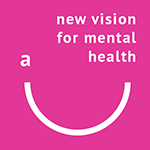This article, written by Karen Snedker and Jerald Herting within an American context, has been published in Youth & Society. The abstract says:
“The purpose of this article is to explore the role of neighborhood characteristics, specifically economic disadvantage/advantage, residential instability, and racial/ethnic heterogeneity on emotional distress (depressed affect, anxiety, hopelessness) among youth. Using a regional sample of adolescents and matching their data to census tracts, we use hierarchical linear modeling to examine the relationship of neighborhood spatial factors on distress while controlling for individual, family, peer, and school factors.
Results show neighborhood effects for adolescent distress are consistent with a stress process model where economic disadvantage and residential instability are positively associated with emotional distress, and indicators of economic advantage are negatively related.
Specifically, we find neighborhood unemployment and housing vacancy rates are associated with increased distress, while the percentage of college graduates and foreign-born residents in the neighborhood is associated with reduced distress. We discuss the implications of our findings for ongoing research on neighborhood contextual effects and adolescent health …”
You can find out more from here.




